European Expansion
Based on the 2012 Grade 10 NSC Exemplar Paper:
Source A:
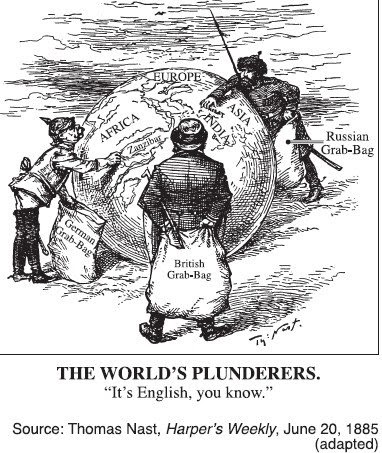
Author Unknown, “The World’s Plunderers: It’s English, you know." For the origin of the source, view the footnote below.[1]
1. Define the concept colonialism with regards to how Portugal and the Netherlands colonized Africa.(1x2 marks)
Colonialism is the process whereby one country gain control over another country and its citizens.[2] European countries expanded their economic wealth and political power by imposing slavery on colonized countries and extracting the natural resources from these countries.
2. Define the concept of “Triangular Trade”. Explain how this concept was used from the 16th century. Mention which countries were involved and what type goods were traded. (1x2 marks); (6x1 marks)
“Triangular Trade” refers to a trading system where a ‘profit’ is gained on each “leg” between three ports. From the 16th century this system of trade was used between trading stations in Europe, Africa and the Americas. Ships with goods such as iron, wine, guns and textiles would leave European ports and exchange these goods for enslaved inhabitants from Africa at the African ports. These ships would then travel across the Atlantic to ports in America. The slaves on board these ships would then be sold to plantations in the Americas coast in exchange for goods such as sugar, tobacco and coffee. These goods would then be transported back to European ports and sold for a profit.[3]
Source B:
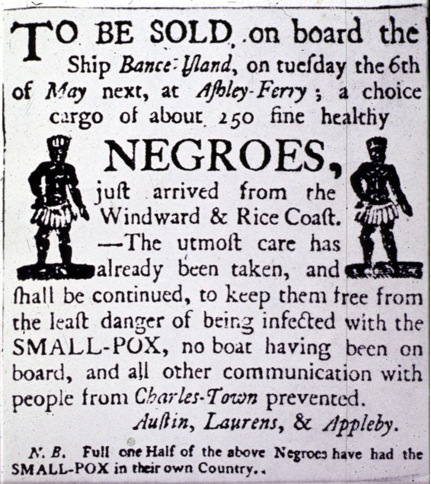
Image Source: https://dp.la/primary-source-sets/the-transatlantic-slave-trade/sources/323..[4]
3. Analyse the above advertisement and discuss how Europeans viewed and treated slaves. (2x2 marks)
When analysing the advertisement above, it is evident that Europeans viewed slaves as products rather than humans. For example, slaves were dehumanized and even though “utmost care has been taken... to keep them free from... being infected with small-pox”, this is solely done for Europeans to profit more from the humans they are selling. Furthermore, the term “negroes” perpetuates the view of slaves as animals rather than acknowledging them as humans.
Source C:
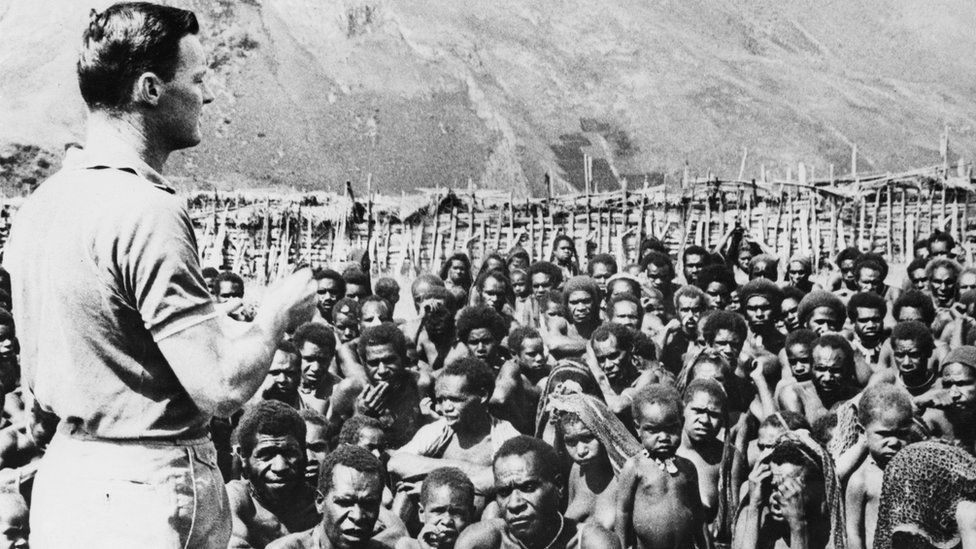
Image Source: https://www.bbc.com/news/world-46336355.[5]
4. Explain the cultural impact that Portuguese expansion had on Angola as illustrated in the picture above. (2x2 marks)
The picture above illustrates a European missionary teaching a crowd of Africans from the Bible. Due to the Portuguese expansion in African countries, such as Angola, the indigenous people became increasingly Catholic and abandoned their African religions. Currently, in modern Angola 90% of the population is Catholic while only 10% still follows their traditional African beliefs.[6] Culturally, Africans became assimilated into Western society by accepting Western religions. Africans became culturally disintegrated as they replaced their African identity and traditions to imitate European culture and religion.
5. Explain why European countries such as Portugal and Spain started to navigate the seas in the early 15th century? (2x2 marks)
- European countries such as Portugal and Spain were attempting to find alternative routes to Asia via alternative Western routes (in Spain’s case) and routes around the African coast (in Portugal’s case).
- European countries such as Portugal and Spain wanted to expand and capitalize on the trading industry. Therefore, they set sail to various coasts and pieces of land in the attempt to find ‘suitable’ locations for trading stations.
- The existing trade route to India, that was located in the Mediterranean Sea, was significantly controlled by the Ottoman Empire and therefore, heavily taxed. Therefore, European countries such as Portugal and Spain started to set sail towards ‘undiscovered locations’ in the hopes of avoiding heavy trading taxes.
Source D:
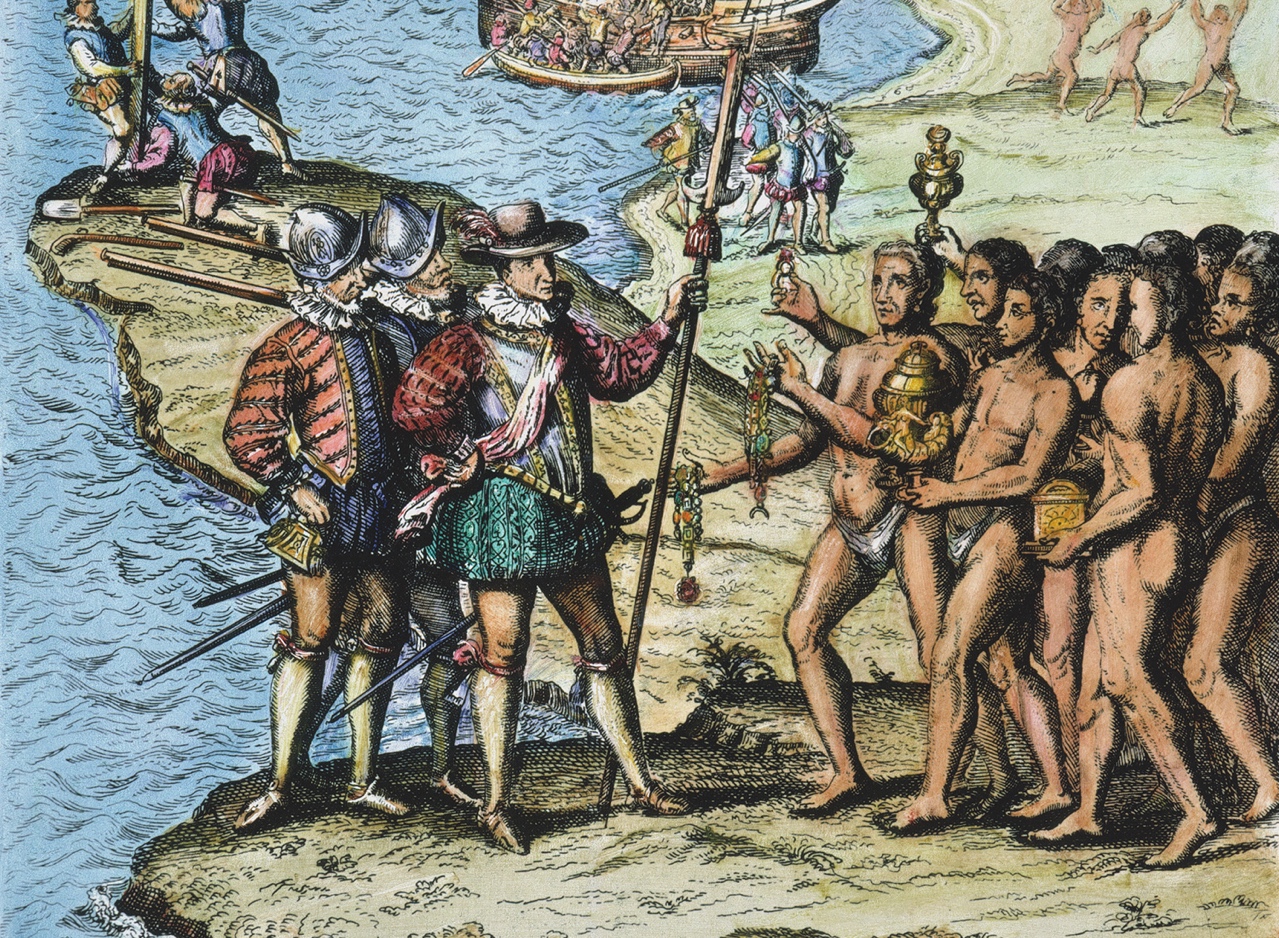
An etching of Christopher Columbus’s arrival on the island that he claimed as Hispaniola. Image Source
6. Analyse the image as provided above. In a short paragraph, discuss what is happening in the painting above. Explain the different attitudes as portrayed in the painting. (8 marks)
The etching depicts the arrival of the Spanish navigator, Christopher Columbus, and his crew in Hispaniola. The etching Depicts the local inhabitants of Hispaniola giving Columbus and his crew gold and jewels. However, when one takes the facial expressions of the inhabitants into account, as well as acknowledging that the Spanish are carrying weapons, it becomes evident that the local inhabitants may be forced to give the Spanish jewels and gold. Furthermore, Columbus and the two soldiers etched beside him, are not accepting the ‘gifts’ with open arms or smiles on their faces, which may indicate that they are demanding jewels and gold – and possibly even more. Furthermore, one can also see local inhabitants running away from the Spanish in the background of the etching. This indicates that the local inhabitants are afraid of the Spanish and that the Spanish may be aggressive and militant towards the local inhabitants. One can also see the Spanish erecting what seems to be a flag in the background of the etch, which indicates that the Spanish is claiming an already inhabitant land their own. Therefore, one can clearly see an attitude of superiority coming from the Spanish and an attitude of forced subordinance coming from the local inhabitants of the island.
Source E:
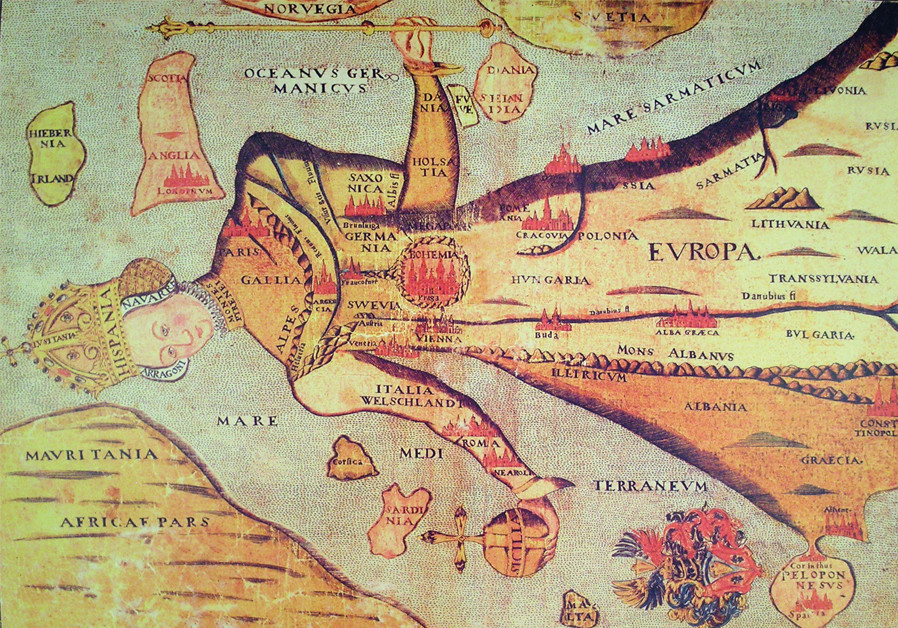
Image Source: https://europeandjerusalem.com/the-resurfacing-of-european-colonialism/.[7]
7. Explain the worldwide effect of colonization (8 marks)
Colonization reinforced specific ideologies while enriching and empowering European countries at the cost of its colonies. The following short essay will explain the impact colonialism had on the world:
Firstly, colonization enriched and empowered colonial empires by extracting resources from colonized countries, such as Africa. Colonization also enabled European countries, such as Britain to become industrialized.[8] Raw materials that was extracted from the colonies would be shipped back to Europe, where the materials would be processed and the final manufactured goods would be sold back to the colonies at a profit.[9]
Secondly, Europe exploited their colonies by enslaving the citizens of Africa and America. While colonialism did not lead to the existence of slavery, it did capitalize on free indigenous labour, which stripped people from their humanity by reinforcing that slaves were only products that could be sold and bought on markets.[10] The practice of slavery did not cause racism, however it did construct a racial hierarchy as Europeans were viewed as the superior race since it was free, while other races were inferior due to their slave status.
Thirdly, colonization led to cultural disintegration since missionaries convinced Africans to become Christians while abandoning their African religious beliefs and traditions. Missionaries aided the expansion of Europe as they assimilated Africans into the Western culture. The church and the state worked together to change the indigenous belief systems of the colonies.[11]
Colonization impacted both the colonial empires and the colonies and can be viewed as a parasitic relationship, where on country feeds on the wealth of their colonies. Colonial empires exploited colonies for their own selfish gain and at the cost of the economic development and humanity of the colonies.
Tips & Notes:
- Check out our Source Analysis and Source Based Questions packs for more tips.
- Remember, these are just examples. You still need to use the work provided by your teacher or learned in class.
- It is important to check in with your teacher and make sure this meets his/her requirements.
This content was originally produced for the SAHO classroom by
Ilse Brookes, Amber Fox-Martin & Simone van der Colff
[1] Author Unknown, “The World’s Plunderers: It’s English, you know”, Lilian’s famous blog, (Uploaded: 23 February 2009), (Accessed: 10 July 2020), Available at: http://liliandabest.blogspot.com/2009/02/2-2.html
[2]Abid Bahrami, “From dawn to dusk of colonialism: A short essay on the origins and effects of colonialism”, International Political Economy Club, (Uploaded: 16 November 2019), (Accessed: 4 July 2020), Available at: https://www.ipeclub.co/from-dawn-to-dusk-of-colonialism/
[3] A. Hart-Davis, History: Definitive Visual Guide, Dorling Kindersley Limited, Great Britain, p. 280.
[4] “To be sold, on board the ship Bance Island, ... negroes, just arrived from the Windward & Rice Coast,” Digital Public Library of America, (Uploaded: Unknown), (Accessed: 10 July 2020), Available at: https://dp.la/primary-source-sets/the-transatlantic-slave-trade/sources/323.
[5] Toby Luckhurst, “John Allen Chau: Do missionaries help or harm?”, BBC News, (Author Unknown), (Accessed: 10 July 2020), Available at: https://www.bbc.com/news/world-46336355
[6] Author Unknown, “Africa, Portugal” South African History Online, (Uploaded: 9 November 2011), (Accessed: 10 July 2020), Available at: https://www.sahistory.org.za/article/africa-portugal
[7] Author Unknown, “Decolonialism was forced on Europe without preparation. As a result, the continent never went through a process of mental decolonization. Is this the reason Europe increasingly behaves in neocolonialist ways?”, Europe and Jerusalem, (Uploaded: 18 January 2019), Accessed: 10 July 2020), Available at: https://europeandjerusalem.com/the-resurfacing-of-european-colonialism/
[8] Author Unknown, “Africa, Portugal” South African History Online, (Uploaded: 9 November 2011), (Accessed: 10 July 2020), Available at: https://www.sahistory.org.za/article/africa-portugal
[9] Ibid.
[10] Author Unknown, “Africa, Portugal” South African History Online, (Uploaded: 9 November 2011), (Accessed: 10 July 2020), Available at: https://www.sahistory.org.za/article/africa-portugal
[11] Ibid.